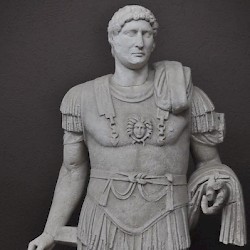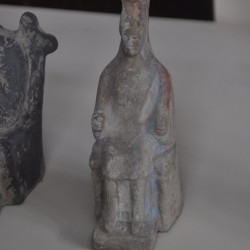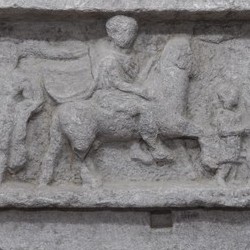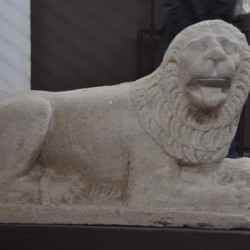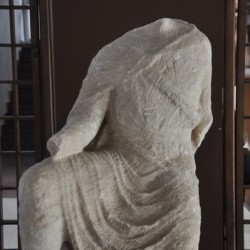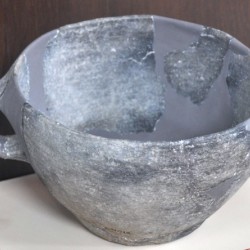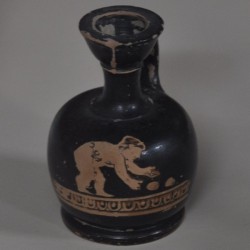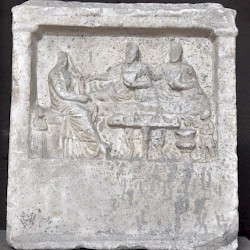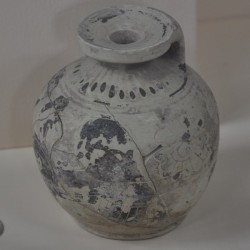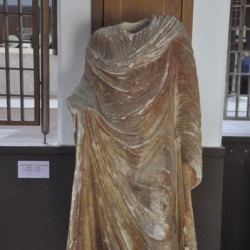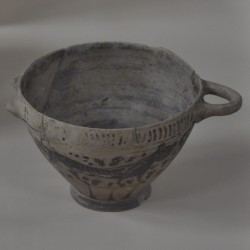Çanakkale, Archaeological Museum
Q637114Çanakkale is a few kilometers east of the ruins of Troy, but it appears that few visitors of the ancient city also go to the museum. We were the only ones over there, and the guards had to switch on the light for us.
It’s a shame, because the four large rooms of the Çanakkale museum are very much worth a visit, and the collection is larger than you realize when you are standing in the garden. The finds are from several archaeological sites on both sides of the Dardanelles.
Among the highlights are some figurines of musicians from Assos, ceramics from Tenedos (Bozcaada), a sarcophagus from Atikulac with obvious Persian influences, and a late archaic sarcophagus with the killing of Polyxena that ought to be shown in any textbook of art history. You will be surprised to see the finds from the Dardanos tumulus, which reminded me of the rich funeral mounds from fourth-century Macedonia: very nice wreaths made of gold for example, and fine statuettes, including a beautiful Aphrodite, inspired by the Cnidian statue of Praxiteles.
I was surprised that there were so few finds from Abydus, ancient Çanakkale. Nevertheless, they include a splendid archaic Perseus and the lovely tombstone of one Agathe, daughter of Papos, buried by the Boule of Abydus.
So, this is a museum that is certainly worth a visit, and a visit can easily be combined with a trip across the Dardanelles, to Eceabat, ancient Sestus: the ferry is not far from the place that was once bridged by Xerxes. On the European shore are the monuments of the soldiers who fell during the Great War; after a visit to that delightful and nice museum, where you realize which beautiful things humans can make, a visit to the battlefield memorials makes you realize that we’re also capable of doing the worst.
This museum was visited in 2012.
